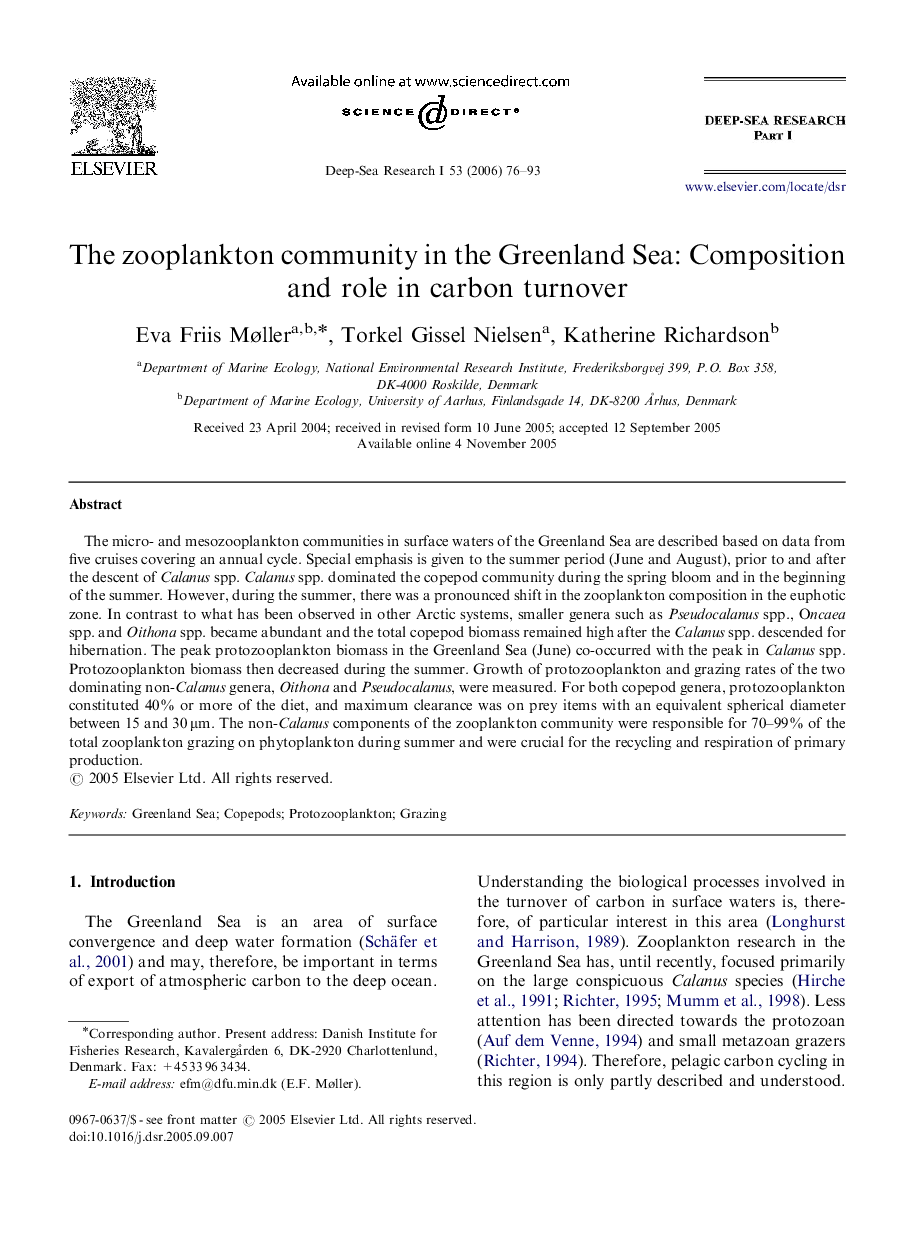| کد مقاله | کد نشریه | سال انتشار | مقاله انگلیسی | نسخه تمام متن |
|---|---|---|---|---|
| 4535749 | 1326138 | 2006 | 18 صفحه PDF | دانلود رایگان |

The micro- and mesozooplankton communities in surface waters of the Greenland Sea are described based on data from five cruises covering an annual cycle. Special emphasis is given to the summer period (June and August), prior to and after the descent of Calanus spp. Calanus spp. dominated the copepod community during the spring bloom and in the beginning of the summer. However, during the summer, there was a pronounced shift in the zooplankton composition in the euphotic zone. In contrast to what has been observed in other Arctic systems, smaller genera such as Pseudocalanus spp., Oncaea spp. and Oithona spp. became abundant and the total copepod biomass remained high after the Calanus spp. descended for hibernation. The peak protozooplankton biomass in the Greenland Sea (June) co-occurred with the peak in Calanus spp. Protozooplankton biomass then decreased during the summer. Growth of protozooplankton and grazing rates of the two dominating non-Calanus genera, Oithona and Pseudocalanus, were measured. For both copepod genera, protozooplankton constituted 40% or more of the diet, and maximum clearance was on prey items with an equivalent spherical diameter between 15 and 30 μm. The non-Calanus components of the zooplankton community were responsible for 70–99% of the total zooplankton grazing on phytoplankton during summer and were crucial for the recycling and respiration of primary production.
Journal: Deep Sea Research Part I: Oceanographic Research Papers - Volume 53, Issue 1, January 2006, Pages 76–93